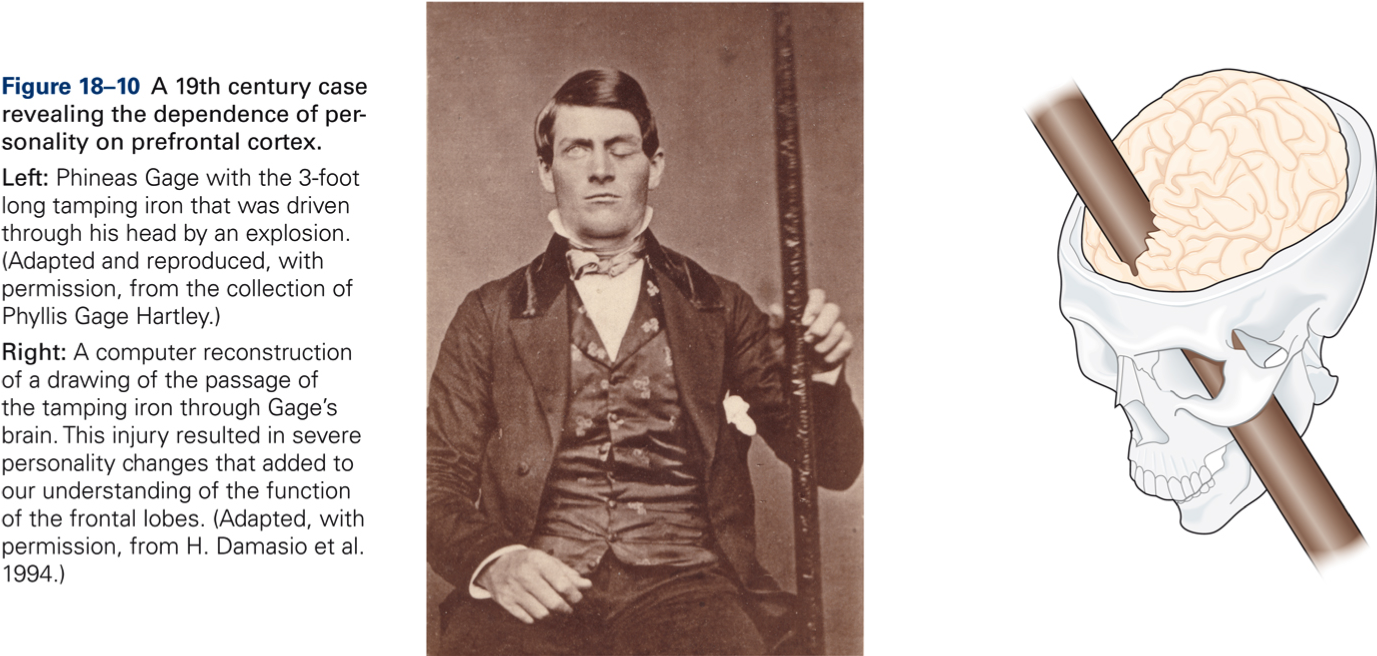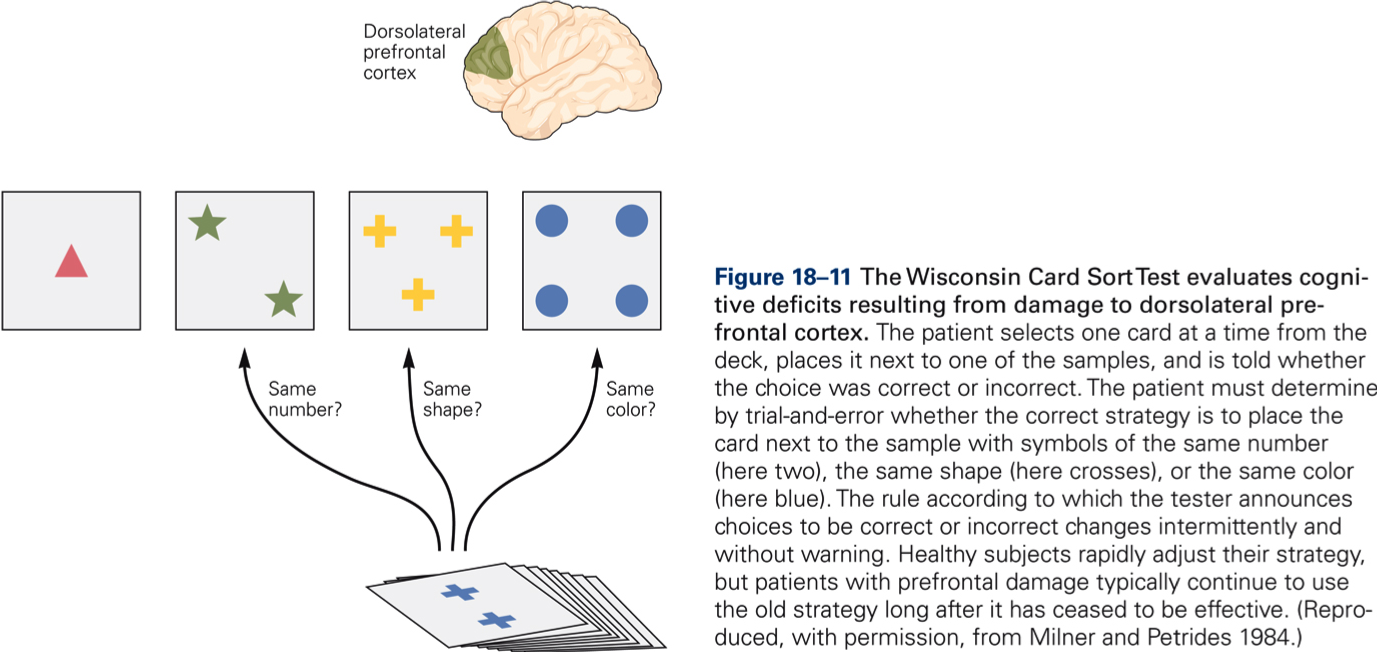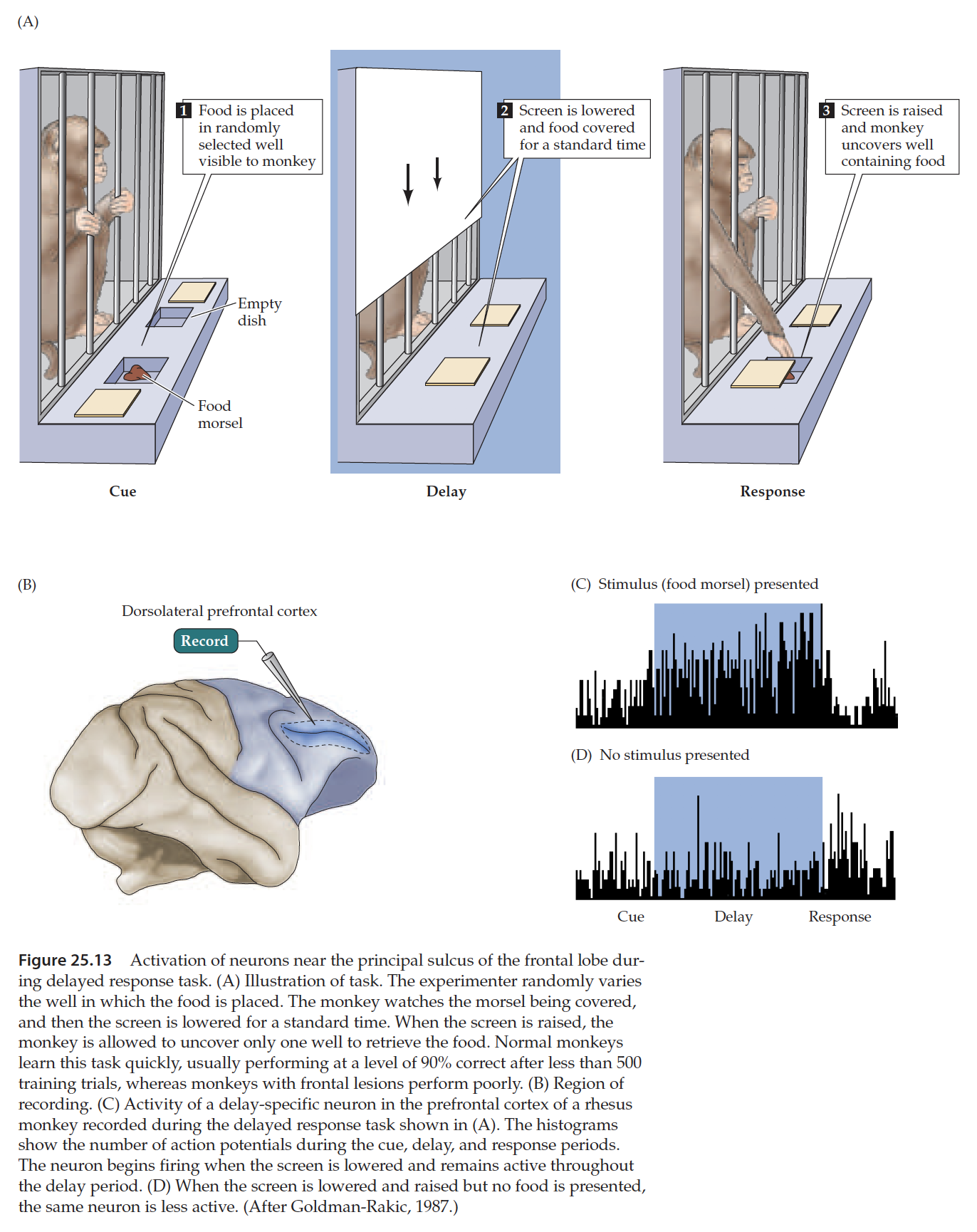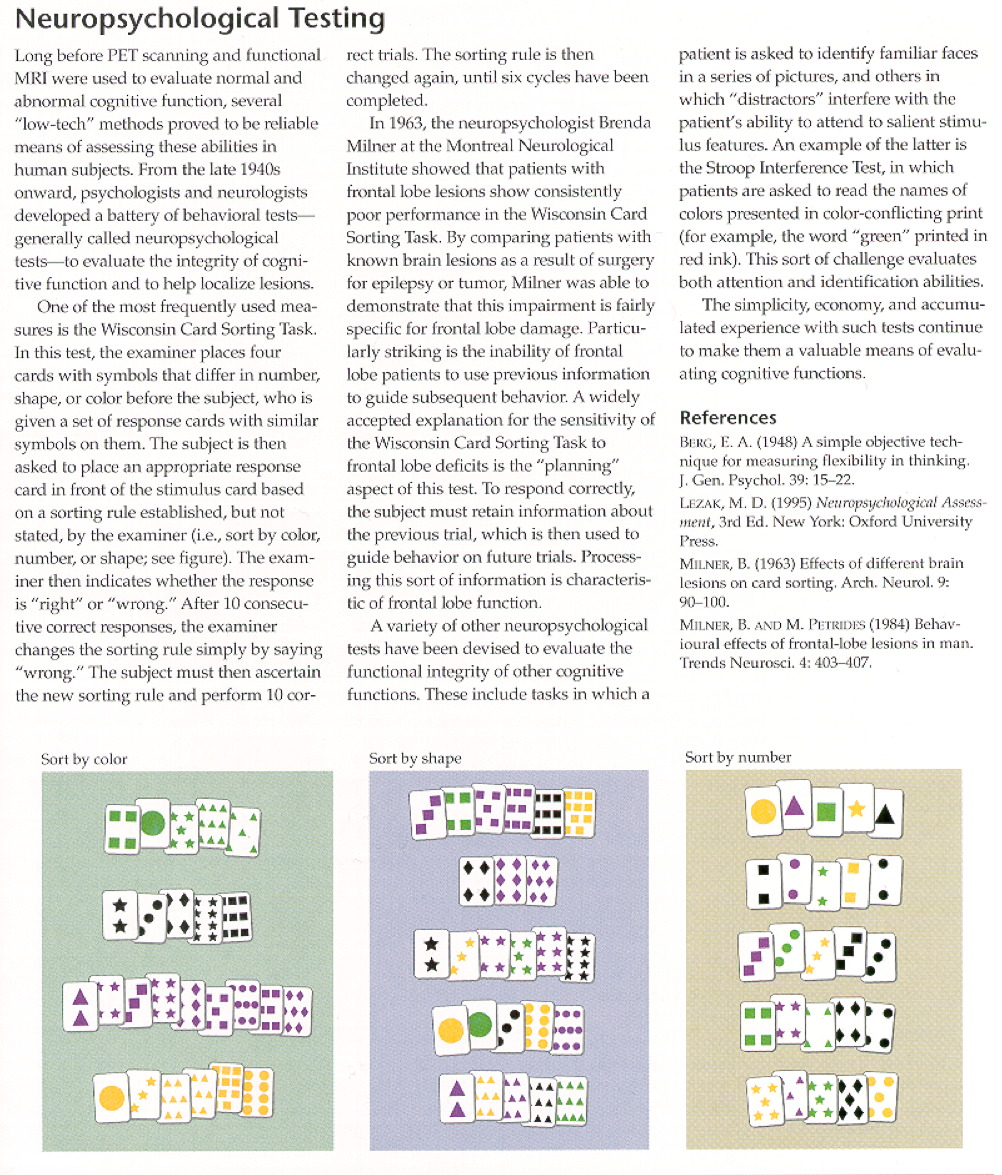M5 | Integrative action of the sensorimotor system – Visual system | Association cortices
Prefontal Association Cortex
Prefrontal association area
Receives information from all modalities and about motivational state. The overall function of the prefrontal association area is to weigh consequences of future actions and act accordingly, that is, select appropriate responses.
Symptoms following lesions in humans
- Personality changes, apathy, indifference, less emotional, less spontaneous behavior.
- Frontal lobotomy was used for reducing aggressive behavior, abandoned for site effects (changes in personality, epilepsy).
- Perseveration i.e. inability to alter response when stimulus changes (Wisconsin card sort test)
Listen and read additional information on the NPR website: Why Brain Scientists Are Still Obsessed With The Curious Case Of Phineas Gage | NPR Weekend Edition Sunday, 5/21/2017 (transcript, credits, 3:55 min)


Symptoms following lesions in monkeys
Lack of delayed spatial response test. Hungry animal is shown food. Food is then placed under one of two containers. After a delay, monkey is allowed to select container. Monkey with prefrontal lesion does poorly on this task. The prefrontal association area is important for working memory (i.e. a specific form of short term memory used for temporary storage of information that is used to guide future action). Deficits are specific for task that involves both delay and spatial aspects. Successful execution of delayed response task requires multiple skills:
- Visual discrimination
- Short term memory
- Planning and execution of visual motor task

References
Kean, S. (2014, 5/6/2014). Phineas Gage: Neuroscience’s Most Famous Patient. Retrieved from http://www.slate.com/articles/health_and_science/science/2014/05/phineas_gage_neuroscience_case_true_story_of_famous_frontal_lobe_patient.html | PDF


